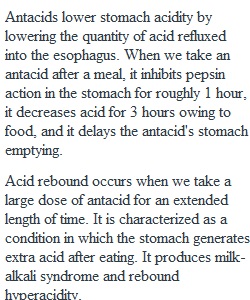


Q Respond to this discussion question by midnight, Day 3 of the online week. Participate on 2 additional days for participation credit. The minimum requirement is 4 responses (initial + 3 responses) on 3 different days. You do not have to respond to every student but you should be active in 3-6 threads as well as being responsive to comments made on your own initial post. Responses need to be substantive and thorough. They should offer new insight, reasoning, or critical and analytical thoughts. One or two sentences is not a substantive response. You are required to use correct spelling and grammar. Check your spelling before submitting. Professional nurses are expected to demonstrate professional conduct at all times. It is acceptable to disagree with your peers but your interactions must remain professional. You can't just log in, post one day and be done. I'm looking for quality posts that further the discussion. Think of this as a discussion we may have in the classroom setting, except we are doing it online over the course of a week. The requirements for discussions will be very similar throughout the 11 weeks; you will be expected to generate initial posts and respond to classmates throughout the week. You need an overall discussion average of 74% to pass this course. A grade of 0 will be earned for each week a student does not post. Late submissions will not be accepted for grading. Any submissions outside of the assigned unit week will not be counted. Note: This is a Post First forum. Students must first post a topic before they are allowed to view or reply to other student’s posted topics. Once you make your first post, your classmate posts will appear and you can respond as directed below. Read the assigned pages in the book and listen to the online lectures. Then prepare your response to questions below for one of the sets of questions below. Note: Use the assigned textbook as your resource and you must cite in APA format to support your response. If you have any questions about participation requirements please post your question on the Course Questions Forum Choose ONE of the following scenarios below. All topics will be on the exam as well as other topics listed in the syllabus. It will be helpful to read and participate in all scenarios below. Scenario #1: J.H., a 48-year-old man, complains of a gnawing, aching pain in the abdominal area that usually occurs several hours after eating which has been going on for about six months. He often times feel very nauseated on and off throughout the day as well. He says that sometimes he takes triple the dosage of over-the-counter antacids which help some, but that the pain has recently intensified. 1. Explain how antacids work. What are your concerns with the amount of antacids J.H is taking? 2. Explain the patient teaching for magnesium containing antacids versus aluminum containing antacids, including rationale. J.H is diagnosed with H. pylori and a bleeding duodenal ulcer. The health care provider prescribed triple therapy to include amoxicillin, tetracycline, and a PPI. 3. J.H. asks the nurse the purpose for all three medications. How would you respond? 4. What drug classification is pantoprazole and how does it work? 5. What is the patient teaching for this classification for pantoprazole? 6. Discuss teaching and nursing interventions that should be included for patients who are prescribed these drugs. 7. J.H. asks if it is okay for him to continue to take aspirin for his headaches. They occur about three times per week. How would you respond? Explain. ________________________________________________________________________________ Scenario #2 A patient is admitted to the medical-surgical floor with complaints of abdominal pain and diarrhea for the past 4 days. The physician has ordered the patient diphenoxylate with atropine, promethazine, and famotidine along with an X-ray of the abdomen. 1. Why would the diphenoxylate with atropine be ordered for this patient? 2. What teaching would need to be included with the administration of this medication? 3. Why would the physician add promethazine to the patient’s medication list? 4. What are the side effects and adverse reactions to promethazine? How would your patient look if they were having an adverse reaction? 5. What classification is famotidine? What is this drug used for? 6. What teaching needs to be included for famotidine? 7. Why would the physician orderfamotidine over metoclopramide? 8. What assessment will tell the nurse that the diphenoxylate with atropine is working? The promethazine? The famotidine? ________________________________________________________________________________ Scenario #3 R.J is being seen in the clinic today for follow up. The nurse is taking a drug history and finds the patient has been taking sucralfate four times a day for the past 3 months, ondansetron as needed, and bisacodyl as needed. 1. What are the classifications and uses for the three drugs R.J. is taking? 2. What are the side effects/adverse reactions of sucralfate the nurse must know for sucralfate? 3. How can the nurse minimize the side effects/adverse reactions of sucralfate? 4. How does ondansetron work? How is it different from promethazine? How is it different from metoclopramide? 5. What are common side effects/adverse reactions of ondansetron? 6. What concerns would the nurse have with the patient taking bisacodyl too often? 7. What assessment will the nurse make to determine if the drugs had a therapeutic effect?
View Related Questions